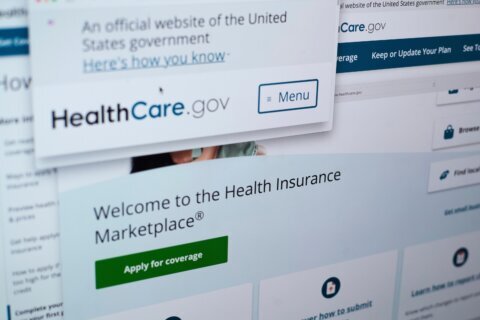Food deserts have been a vexing problem for area leaders for years now.
Living in a food desert — or an area where it is harder to buy fresh, nutritious food at an affordable price — means you have an increased risk for diabetes, obesity and other health problems. A new study finds that not only do you have a greater chance of living with all of those conditions, but you’re also more likely to die earlier than someone who doesn’t live in a food desert.
Daniel Wiese, a senior scientist with the American Cancer Society who does cancer disparity research, shared findings from the study in the Journal of Urban Health.
“Having access to healthy food and especially to fresh meats, fresh vegetables is essential just for many different health outcomes. So there is an association with diabetes; with obesity rates,” said Weise. “What we did not know was whether we also would see some association with the life expectancy.”
According to the study, those with higher incomes living in places that don’t qualify as food deserts lived over five years longer than those who do live in food deserts.
“If people don’t have any grocery store in close proximity to their location, they may just eat some of their food, which is unhealthy,” he said.
In this study, food deserts were defined as any place where more than 100 people live more than a half mile away from a store selling fresh groceries, who also don’t have their own form of transportation to shop with. It also includes any area where more than a third of the population lives at least 20 miles away from such a store regardless of transportation access.
“We first may think that this half a mile is not really a big distance and people may take transit, public transit or just walk there. It doesn’t sound far,” said Wiese. “But, when we think about our daily routine — especially that, most of the time we would spend either at work or taking care of the family — then incorporating such a commute might be complicated for many people. And unfortunately, even public transit may not always be an optimal solution to reach the nearest grocery store quickly and [conveniently], without doing too many transfers.”
Elected leaders around the region have worked hard to incentivize grocery stores to move into food deserts, especially in Wards 7 and 8 in the District, and inside the beltway in Prince George’s County.
The results have been rather mixed, with some stores opening, but others have struggled to stay in business. Wiese said local governments should continue to offer incentives, and even consider subsidies. But he had other ideas too.
“I think it’s also important to think about how is it possible to expand the quality of the food that is offered at a smaller store, like corner stores in those neighborhoods,” he said. “Because most of the neighborhoods have some source of food, it’s just not always the one that is considered as healthy.”
Modern technological conveniences can also help.
“We know from other countries, especially Europe, that online grocery shopping may be a solution for some urban neighborhoods getting access to healthy food,” said Wiese. He said the United Kingdom in particular has shown signs of success.
“Our results provide further evidence that a healthy diet is important for living a healthier and longer life,” said Wiese. He said he hoped that elected leaders will continue to strive to “address the problem, either bringing stores into the neighborhoods or increasing access to those stores.”








